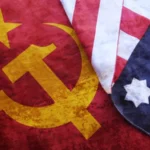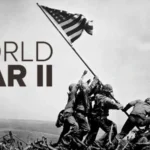
Welcome to our journey back in time as we explore 25 Interesting Facts About 1953! This pivotal year was marked by significant events, cultural shifts, and technological advancements that shaped the world we live in today. From groundbreaking scientific discoveries to memorable pop culture moments, 1953 was a year full of intrigue and transformation. Join us as we delve into these fascinating facts that not only highlight the historical significance of the year but also offer a glimpse into the lives of those who experienced it. Whether you’re a history buff or just curious about the past, there’s something here for everyone to enjoy!
James Bond’s debut in literature in 1953: The character of James Bond, created by British author Ian Fleming, made his first appearance in the novel “Casino Royale,” published in 1953. This book introduced readers to the suave and sophisticated British secret agent, 007, who would go on to become a cultural icon. Fleming’s portrayal of Bond combined elements of espionage, action, and romance, setting the stage for a series of novels and eventually a hugely successful film franchise that continues to captivate audiences worldwide.
Introduction of color television in 1953: The transition from black-and-white to color television began to take shape in 1953, particularly in the United States. The Federal Communications Commission (FCC) approved the first color television standard, which allowed for the broadcast of color programs. This technological advancement revolutionized the viewing experience, as audiences could now enjoy vibrant, lifelike images. The first coast-to-coast color broadcast occurred on January 1, 1954, but the groundwork laid in 1953 marked a significant turning point in television history.
Everest was conquered by Hillary and Norgay in 1953: On May 29, 1953, Sir Edmund Hillary from New Zealand and Tenzing Norgay, a Sherpa of Nepal, became the first climbers confirmed to reach the summit of Mount Everest, the highest peak in the world at 8,848 meters (29,029 feet). Their successful ascent was a monumental achievement in mountaineering and inspired countless adventurers. The expedition was part of a British campaign led by John Hunt, and Hillary and Norgay’s triumph was celebrated globally, solidifying their places in history.
End of the Korean War in 1953: The Korean War, which began in 1950, officially ended with the signing of an armistice agreement on July 27, 1953. This agreement established a ceasefire and created the Korean Demilitarized Zone (DMZ), which still exists today, separating North and South Korea. The war resulted in significant loss of life and destruction, but the armistice halted active combat. However, a formal peace treaty was never signed, leaving the two Koreas technically still at war.
The first transatlantic television transmission in 1953: On September 11, 1953, the first live transatlantic television broadcast took place, connecting audiences in the United States and Europe. The event featured a variety of programming, including news segments and entertainment, showcasing the technological advancements in communication. This landmark event paved the way for global broadcasting and laid the foundation for the interconnected media landscape that we experience today.
First issue of Playboy magazine in 1953: Playboy magazine, founded by Hugh Hefner, published its inaugural issue in December 1953. The magazine featured Marilyn Monroe on its cover and included articles, fiction, and photography, blending adult content with lifestyle and culture. Playboy quickly gained popularity and became a symbol of the sexual revolution of the 1960s, challenging societal norms and contributing to discussions about sexuality, freedom, and the role of women in society.
Development of polio vaccine in 1953: In 1953, Dr. Jonas Salk developed the first effective polio vaccine, which would later be administered to children worldwide. Polio, a highly contagious viral disease, caused paralysis and even death, particularly in children. Salk’s vaccine underwent extensive testing and was declared safe and effective in 1955, leading to widespread vaccination campaigns that significantly reduced the incidence of polio globally, marking a major public health victory.
Coronation of Queen Elizabeth II in 1953: Queen Elizabeth II was crowned in Westminster Abbey on June 2, 1953, following the death of her father, King George VI. The coronation ceremony was a grand affair, attended by dignitaries from around the world and broadcast on television, allowing millions to witness the historic event. Elizabeth’s reign, which has become the longest of any British monarch, has seen significant changes in the monarchy and the United Kingdom, as well as the evolution of the Commonwealth.
Eisenhower’s presidential inauguration in 1953: Dwight D. Eisenhower was inaugurated as the 34th President of the United States on January 20, 1953. A former five-star general in the U.S. Army, Eisenhower’s presidency was marked by his leadership during the Cold War, the establishment of the Interstate Highway System, and efforts to contain communism. His administration focused on economic prosperity and national security, and he served two terms in office, leaving a lasting impact on American politics and society.
Chevrolet introduced the first Corvette in 1953: The Chevrolet Corvette, America’s first true sports car, was introduced by General Motors in 1953. The initial production of the Corvette began in Flint, Michigan, with only 300 units made that year, all of which were convertible models. The Corvette featured a fiberglass body, a sleek design, and a six-cylinder engine, setting it apart from other cars of the time. Although it faced initial skepticism, the Corvette quickly gained popularity and became an enduring symbol of American automotive culture, evolving into a performance icon over the decades.
The Rosenbergs’ execution for espionage in 1953: Julius and Ethel Rosenberg were executed on June 19, 1953, after being convicted of espionage for allegedly passing atomic secrets to the Soviet Union during the Cold War. Their trial and execution were highly controversial, sparking debates about anti-communist hysteria and the fairness of the judicial process. The case drew international attention and remains a significant moment in American history, symbolizing the tensions and fears of the era regarding espionage and national security.
Boston Red Sox’s historic signing in 1953: In 1953, the Boston Red Sox made a significant move by signing infielder and outfielder Billy Goodman. This signing was notable because Goodman was a versatile player who contributed to the team in various positions. The Red Sox had a storied history in Major League Baseball, and Goodman’s addition was part of a broader effort to strengthen their roster. The team would continue to build its legacy, ultimately leading to future successes in the league.
The first 3D film was released in 1953: The first feature-length 3D film, “House of Wax,” was released in 1953, starring Vincent Price. This film utilized the anaglyphic process, which required viewers to wear special glasses to experience the three-dimensional effect. “House of Wax” was a commercial success and helped to revive interest in 3D cinema during the 1950s, leading to a wave of 3D films that captivated audiences with their innovative visual techniques.
Concorde supersonic aircraft proposal in 1953: The Concorde, a turbojet-powered supersonic passenger airliner, was proposed in 1953 as a joint venture between the British and French governments. The aircraft was designed to fly at speeds exceeding Mach 2, drastically reducing flight times across the Atlantic. Although the Concorde would not enter service until 1976, the initial proposal marked the beginning of a new era in aviation technology, showcasing ambitions for faster and more efficient air travel.
“Roman Holiday” film released in 1953: “Roman Holiday,” directed by William Wyler and starring Audrey Hepburn and Gregory Peck, premiered in 1953. The romantic comedy tells the story of a princess who escapes her royal duties and explores Rome, experiencing life as an ordinary person. Hepburn’s performance earned her an Academy Award for Best Actress, and the film became a classic, celebrated for its charming narrative and picturesque cinematography, highlighting the beauty of Rome and the allure of adventure.
DNA structure was discovered in 1953: In April 1953, scientists James Watson and Francis Crick published a groundbreaking paper in the journal Nature, revealing the double helix structure of DNA. Their discovery was pivotal in understanding the genetic code and how traits are inherited. The research built upon the work of Rosalind Franklin and Maurice Wilkins, and it laid the foundation for modern genetics, influencing fields such as biology, medicine, and forensic science, and earning Watson, Crick, and Wilkins the Nobel Prize in Physiology or Medicine in 1962.
CIA’s operation Ajax in Iran in 1953: Operation Ajax was a covert operation orchestrated by the CIA and British intelligence in 1953 to overthrow the democratically elected Prime Minister of Iran, Mohammad Mossadegh. The operation aimed to secure Western control over Iranian oil resources and curb the influence of communism. The coup successfully restored the Shah of Iran to power, but it also led to decades of political unrest in Iran and strained U.S.-Iran relations, ultimately culminating in the Iranian Revolution of 1979.
What happened during the 1953 coup in Iran?: The 1953 coup in Iran, known as Operation Ajax, resulted in the overthrow of Prime Minister Mohammad Mossadegh, who had nationalized the Iranian oil industry. The coup was executed through a combination of propaganda, political manipulation, and street protests, leading to the Shah’s return to power. The aftermath of the coup significantly impacted Iranian politics, fostering resentment toward Western intervention and contributing to the rise of anti-American sentiment in the years that followed.
Sir Edmund Hillary’s knighthood in 1953: Following his historic ascent of Mount Everest in 1953, Sir Edmund Hillary was knighted by Queen Elizabeth II in recognition of his remarkable achievement and contributions to mountaineering. The honor was bestowed upon him during a ceremony in London, celebrating not only his success on Everest but also his dedication to exploring and supporting the Himalayan region. Hillary became a national hero in New Zealand and an internationally respected figure, using his fame to advocate for the welfare of the Sherpa people and promote environmental conservation in the Himalayas.
First non-stop transcontinental helicopter flight in 1953: On June 24, 1953, a significant milestone in aviation history was achieved when two U.S. Army helicopters completed the first non-stop transcontinental flight. The flight, which covered approximately 2,500 miles from coast to coast, showcased the capabilities of helicopter technology and demonstrated its potential for long-distance travel and military applications. This achievement marked an important step in the evolution of aviation, expanding the possibilities for helicopter use in various fields, including emergency services and transportation.
Soviet Union’s hydrogen bomb announcement in 1953: In 1953, the Soviet Union announced that it had successfully tested a hydrogen bomb, a significant advancement in nuclear weapons technology. This development escalated the arms race during the Cold War, as the hydrogen bomb was far more powerful than atomic bombs previously used. The announcement heightened tensions between the Soviet Union and the United States, leading to increased military spending and further developments in nuclear arsenals, contributing to the global climate of fear and uncertainty during this period.
“Peter Pan” opened on Broadway in 1953: The musical adaptation of J.M. Barrie’s “Peter Pan,” featuring music by Mark Charlap and lyrics by Carolyn Leigh, premiered on Broadway on October 20, 1953. Starring Mary Martin as Peter Pan, the production was a significant success and became a beloved classic in American theater. The story of Peter Pan, the boy who never grows up, captivated audiences with its themes of adventure, childhood, and the importance of imagination. The Broadway production has since become iconic, influencing numerous adaptations and performances worldwide.
Patent of the first artificial heart in 1953: In 1953, Dr. Paul Winchell, an American ventriloquist and inventor, was granted a patent for the first artificial heart. Although Winchell’s design was never developed into a functional device for human use, it laid the groundwork for future innovations in cardiac surgery and artificial organ development. The concept of an artificial heart would evolve over the decades, leading to significant advancements in medical technology, including the eventual creation of devices that could be implanted in patients with severe heart conditions.
“War of the Worlds” radio broadcast impact in 1953: The 1953 radio adaptation of H.G. Wells’ “War of the Worlds,” produced by the Mercury Theatre on the Air and directed by Orson Welles, was a notable event in broadcasting history. Although the original broadcast occurred in 1938, the 1953 version drew attention for its dramatic storytelling and sound effects, captivating listeners. The impact of the 1938 broadcast, which caused panic among some listeners who believed the fictional alien invasion was real, continued to influence discussions about media responsibility and the power of radio as a medium.
Launch of the nuclear-powered submarine USS Nautilus in 1953: The USS Nautilus, the world’s first nuclear-powered submarine, was launched on January 21, 1953. This groundbreaking vessel represented a significant leap in naval technology, allowing for extended underwater operations without the need for frequent refueling. The Nautilus could travel at high speeds and operate for long periods, revolutionizing submarine warfare and naval strategy. Its launch marked the beginning of a new era in military and civilian maritime capabilities, paving the way for future advancements in nuclear propulsion technology.
Frequently Asked Questions about 1953:
1. What major historical events occurred in 1953?
In 1953, several significant events took place, including:
- The Death of Joseph Stalin: On March 5, 1953, the leader of the Soviet Union passed away, leading to a power struggle and eventual de-Stalinization.
- The Korean War Armistice: An armistice was signed on July 27, 1953, effectively ending the Korean War, although a formal peace treaty was never established.
- The Discovery of DNA Structure: In April 1953, James Watson and Francis Crick published their groundbreaking paper on the double helix structure of DNA, revolutionizing biology and genetics.
2. What were the popular cultural trends in 1953?
The cultural landscape of 1953 was vibrant and diverse:
- Television: The popularity of television soared, with shows like “I Love Lucy” and “The Ed Sullivan Show” becoming household staples.
- Music: The rise of rock and roll began to take shape, with artists like Chuck Berry and Elvis Presley gaining prominence.
- Fashion: The fashion of the time was characterized by elegant dresses for women, often featuring full skirts, and tailored suits for men.
3. What scientific advancements were made in 1953?
1953 was notable for several scientific breakthroughs:
- DNA Structure: The elucidation of the DNA double helix by Watson and Crick laid the foundation for modern genetics.
- Polio Vaccine: Dr. Jonas Salk developed the first effective polio vaccine, which would significantly reduce the incidence of the disease.
4. Who were some notable figures born in 1953?
Several individuals who would go on to have significant impacts were born in 1953, including:
- Prince Charles: Born on November 14, he became the heir apparent to the British throne.
- Michael J. Fox: Born on June 9, he is an acclaimed actor known for his roles in “Back to the Future” and “Family Ties.”
5. What were the significant political events in 1953?
Political events in 1953 included:
- The Iranian Coup: In August 1953, a coup orchestrated by the CIA and British intelligence overthrew Prime Minister Mohammad Mossadegh, reinstating the Shah of Iran.
- The Formation of NATO: While NATO was established in 1949, its significance grew in 1953 as tensions of the Cold War escalated.
6. How did the Cold War influence events in 1953?
The Cold War significantly impacted global politics in 1953:
- Nuclear Arms Race: The U.S. and the Soviet Union continued to develop nuclear weapons, heightening tensions.
- Espionage: The year saw increased espionage activities, including the trial of Julius and Ethel Rosenberg, who were executed for espionage in 1953.
7. What was the significance of the Korean War in 1953?
The Korean War was a critical conflict during the Cold War:
- Armistice Agreement: The signing of the armistice in July 1953 established the Korean Demilitarized Zone (DMZ), which still exists today, effectively ending active combat but not the war itself.
- Impact on U.S. Foreign Policy: The war influenced U.S. military strategy and foreign policy in Asia, leading to a more significant military presence in the region.
8. What movies were released in 1953?
Several notable films were released in 1953, including:
- “Roman Holiday”: A romantic comedy that won Audrey Hepburn an Academy Award for Best Actress.
- “The Robe”: The first film released in the widescreen format CinemaScope, it was a significant achievement in film technology.
9. What were some technological advancements in 1953?
Technological progress was evident in 1953:
- Transistor Radio: The popularity of the transistor radio grew, making music and news more accessible.
- Computers: Early computers like the UNIVAC I were beginning to be used for business and government applications.
10. How did fashion evolve in 1953?
Fashion in 1953 was characterized by:
- Women’s Fashion: The hourglass silhouette became popular, with fitted bodices and full skirts.
- Men’s Fashion: Suits became more casual, with lighter fabrics and brighter colors becoming fashionable.









